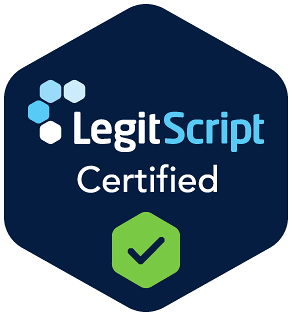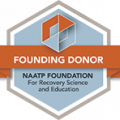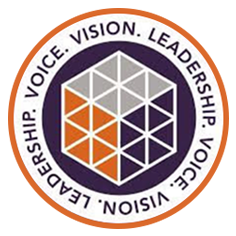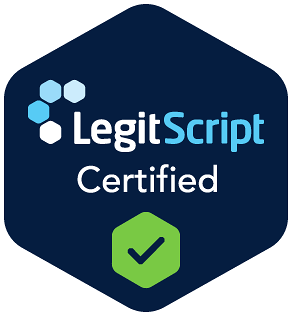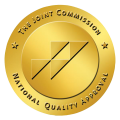When it comes to drug and alcohol withdrawal, especially Vicodin withdrawal, the effects will vary from person to person. Everybody is unique; each person carries a very specific genetic makeup. Responses to withdrawal will be different from case to case depending on a variety of those factors. However, that isn’t to say there isn’t a generalized version of what withdrawal symptoms may look like or how long the timeline is.
Vicodin Withdrawal Symptoms
Detoxing from Vicodin can be a long and difficult process, but it is possible to get through it with the help of a professional treatment program. During Vicodin withdrawal, people may experience a wide range of symptoms, including the following:
- Nausea
- Vomiting
- Diarrhea
- Abdominal pain
- Muscle aches
- Anxiety
- Depression
Withdrawal symptoms aren’t easy to beat; it takes medical supervision and medication to curb the effects that the come-down is having on you. However, all of this doesn’t mean that you’re alone. There are those who are willing to help you come up with a plan for rehab that is tailored to you specifically.
Vicodin Withdrawal Timeline
Sometimes it has been noted that Vicodin cravings will come out of the blue long after a person has stopped taking it. Though this is true in some cases, the facts of the drug’s half-life remain. Vicodin has a half-life of 4 hours and completely leaves a person’s system after 8 hours.
Vicodin withdrawal symptoms actually begin once the drug has been flushed from the body. As previously mentioned, the timeline varies from individual to individual. Oftentimes, the worst of the withdrawal symptoms will end within 2 weeks’ time. That being said, in a more granular sense, it’s difficult to say how long any particular individual’s withdrawal symptoms will last.
What is Post-Acute Withdrawal Syndrome?
Post-Acute Withdrawal Syndrome (PAWS) is a condition a person can develop that makes them experience withdrawal for more than three weeks; this particular syndrome can even last months depending on the individual. When this happens, it is extremely difficult to determine when a person will be completely done experiencing withdrawal from the drug.
In addition to this, there are also a variety of factors that can impact how long a person experiences withdrawal. These include the following:
- Length of use
- Dose
- Addiction
- Method of care
There are many factors that influence a person’s withdrawal timeline. This being the case, it is imperative to seek individualized care. That way, the treatment is centered around individual needs rather than trying to find a cookie-cutter solution.
What are the Types of Treatment Utilized in 30-day Programs?
Detox is the first and most important step of any addiction rehab. Our 30-day treatment program utilizes this vital step to help you cleanse your body of substance dependency, specifically at our Houston medical detox facility. This is achieved through a series of medically administered medications, as well as mental and physical cleansing to combat withdrawals. Completing our detox programs gives you the upper hand on the remainder of your recovery journey.
CBT treatment is a mental training therapy that alters negative thought processes and behavioral patterns. Doctors accomplish this by developing deep-rooted trust by getting to know your addiction history, triggers, addictive habits, and substance struggles. Speak to a Magnolia City Detox receptionist to find a 30-day CBT treatment program that’s best for you.
Perhaps the most personalized treatment of 30-day recovery programs is individual therapy. Our one-on-one treatment practices are the most meticulous, getting to the root of the issue through increased therapeutic attentiveness. These methods maximize the effectiveness and efficiency of your rehab throughout the entirety of the 30-day process.
Family therapy provides the same in-depth attentiveness and care as individual treatment but on a broader scale. The only difference is some people simply thrive in different environments and treatment processes, depending on your personality. In the case of family therapy, the patient and their family members are given the opportunity to recover together.
This also helps mend and strengthen family bonds, while developing trust and cohesiveness. Thus, family therapy is good for more than just addiction rehab, it has the potential to heal long-time family problems.
Studies confirm that addiction produces diverse chemical reactions in men and women mentally, physically, and emotionally. These biological and genetic differences require gender-specific approaches to properly recover from addictions and associated withdrawal symptoms. Some of these biological discrepancies come down to the statistics that show men with higher rates of addiction struggle, while women appear more prone to relapse.
Doctors utilize gender-based therapy to ensure treatment focuses on the correct aspects of your rehab that need the most attention. These gender-based treatments are just a glimpse of the many ways we provide the most personalized therapy possible.
Group therapy is an exceptional 30-day treatment option for numerous reasons. The primary benefit is meeting other similarly-minded people who share your goals and struggles. This provides the greatest peace of mind of realizing you’re not alone. In turn, you’re enabled to form a strong support system and develop the greatest bonds of friendship that will endure the test of time.
What is Vicodin?
Acetaminophen is a non-opioid pain reliever. It’s used in many over-the-counter (OTC) and prescription medications. Acetaminophen works by reducing the number of prostaglandins, which are hormones that cause pain and inflammation.
Vicodin is available in tablet form. It’s usually taken every 4 to 6 hours as needed for pain relief. The starting dose is typically one or two tablets every 4 to 6 hours as needed. Your doctor will adjust your dose based on your response to the medication.
Acetaminophen is also available in liquid form. It’s usually taken every 4 to 6 hours as needed for pain relief. The starting dose is typically 15 milliliters (mL) every 4 to 6 hours as needed. Your doctor will adjust your dose based on your response to the medication.
What is Vicodin Used for?
Vicodin is a medication that is used to relieve pain. It is a narcotic pain reliever that is classified as a Schedule II controlled substance. Vicodin is a combination of the narcotic hydrocodone and the non-narcotic pain reliever acetaminophen. It is available in tablet form and is taken orally. Vicodin works by binding to opioid receptors in the brain and spinal cord, which decreases the perception of pain.
How is Vicodin Withdrawal Treated?
What is Medically Assisted Detox?
Detox, also called detoxification, is the process of cleansing the body of toxins. These toxins can come from many sources, including pollution, chemicals, and medications. The goal of detox is to remove these toxins so that the body can function properly.
There are many different ways to detox the body, but one of the most common and effective methods is medically assisted detox. This type of detox uses medication to help the body rid itself of toxins. Medically assisted detox can be done in an inpatient or outpatient setting, depending on the needs of the individual.
One of the benefits of medically assisted detox is that it can help to reduce withdrawal symptoms. Withdrawal symptoms can be uncomfortable and even dangerous, so this is an important consideration. Medically assisted detox can also help to make the detox process more comfortable and less likely to cause relapses.
Are There Other Ways to Treat Vicodin Withdrawal?
- Partial Hospitalization Programs
- Inpatient residential treatment
- Outpatient treatment
- Holistic treatment
Partial hospitalization programs (PHPs) provide intensive treatment for people with mental illness who are not able to stay in a hospital but still need more care than they can receive at home or in an outpatient setting. PHPs typically offer a variety of services, such as individual and group therapy, medication management, and educational groups. These programs can be very helpful for people who are struggling to manage their mental illness and are at risk of being hospitalized.
Inpatient residential treatment is a type of treatment in which people with mental health disorders or addictions live in a facility while receiving care. This type of treatment can last for a few weeks or months, and people in treatment typically receive around-the-clock care from medical and mental health professionals. The length of the treatment depends greatly on the severity of one’s addiction or withdrawal symptoms.
Inpatient residential treatment is often used to treat people who have not responded well to other types of treatment, such as outpatient therapy or medication. Residential treatment can also be used as a step down from partial hospitalization programs.
Outpatient treatment allows people to live at home and continue working or going to school while receiving treatment for their addiction. Outpatient treatment usually involves meeting with a counselor or therapist on a regular basis to discuss progress and challenges. Treatment may also include medication, support groups, and other types of counseling. Outpatient treatment is often less expensive than inpatient treatment, but it can be just as effective. It is important to find an outpatient program that offers the right level of care and support for your individual needs.
Holistic treatment for Vicodin addiction generally focuses on the entire person, rather than just the addiction itself. This approach recognizes that there are often underlying issues that contribute to substance abuse and addiction, and addressing these can help promote long-term recovery. Treatment may include individual and group counseling, as well as holistic therapies such as yoga, meditation, and art therapy. Addressing the physical, emotional, and spiritual aspects of addiction can help create a foundation for lasting recovery.

